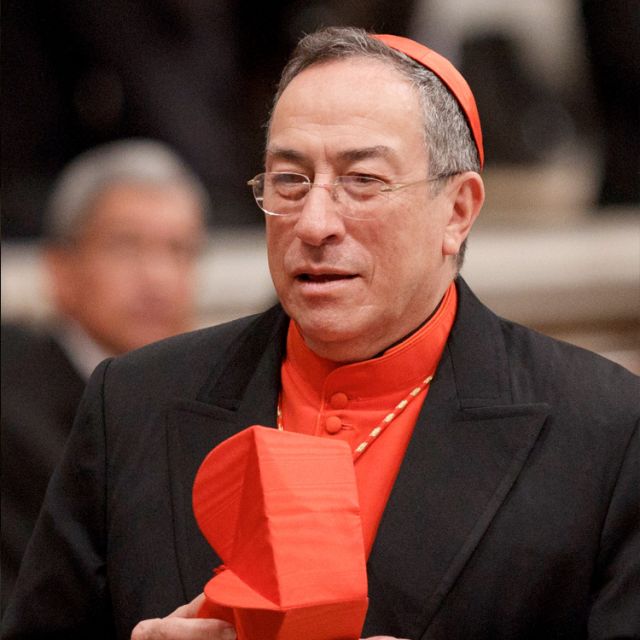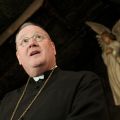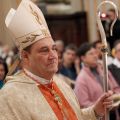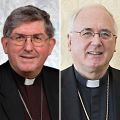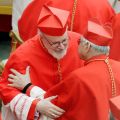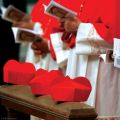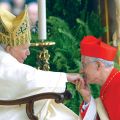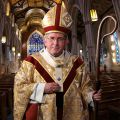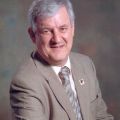Features
The following is the list of cardinals under the age of 80 who are eligible to elect the pope. They are listed in alphabetical order, with their country.
A Vatican insider’s observations on the new cardinals
By John Allen Jr., Catholic Register SpecialNaming new cardinals is among the more important acts of any papacy, because the cardinals form the “electoral college” that will pick the next pope. That’s arguably even more significant this time around, given that Benedict XVI will turn 85 in April — and although there’s no sign of any health crisis, at that age it’s natural to begin thinking about what might come next.
Here are five quick observations about the 21 new cardinals named by Benedict XVI, including 18 who are under 80 and therefore eligible to participate in a future conclave.
Salt+Light has consistory covered
By Catholic Register StaffAlthough the consistory to elevate Archbishop Thomas Collins to cardinal is being held in the Vatican, the events of this historic week are only an alarm clock (or rooster) away for most Canadians.
Salt + Light Television will be carrying the major events live and showing others on tape delay. That means that, due to the six-hour time difference between Rome and Toronto, viewers will need to be in front of their televisions in the wee hours of the morning to witness Collins receive his red hat from Pope Benedict XVI.
Cardinal Jean-Claude Turcotte expects nothing less than excellence from Collins
By Deborah Gyapong, Canadian Catholic NewsOTTAWA - When asked what advice or encouragement Cardinal-designate Thomas Collins might need in his new position, Cardinal Jean-Claude Turcotte laughed.
“I will it say it’s courage,” the cardinal said from his office in Montreal. “To be a cardinal, it’s a lot of work. It is not only to elect the Pope!”
Collins will become a member of many congregations, or dicasteries, in the Holy See, Turcotte said. “Cardinals are the counsellors of the Pope in those different congregations.” He can expect to do a lot more travelling to Rome, he added.
"A sly sense of humour couples with serious love of the faith" - Archbishop Prendergast
By Deborah Gyapong, Canadian Catholic NewsOTTAWA - Over the years, Ottawa Archbishop Terrence Prendergast has come to appreciate the depth of Archbishop Thomas Collins’ scholarship, his love for the Scriptures, his joy in sharing the Good News of Jesus Christ and his courage in professing his faith in the public square.
Though Prendergast had crossed paths many times with Collins, it wasn’t until the two were in Rome together in 1999 to receive the pallium that they began to know each other. The pallium is a wool band the Holy Father presents to Metropolitan Archbishops as a sign of their jurisdiction in the Universal Church and of their closeness to the Pope.
Responsibilities of the cardinals of the Holy Roman Church
By Catholic Register StaffThe most important duty of a cardinal is to elect the Pope, but the responsibilities of the College of Cardinals have steadily evolved over the centuries. Cardinals are personally selected by the Pope. They give counsel to the Pope, contribute to the governance of the Church and act as papal envoys. Some are officers of the Roman Curia while many serve as bishops of major diocese around the world. Cardinals have been responsible for electing popes since 1059. They remain eligible to vote until age 80 and the number of voting cardinals is limited to 120.
Collins will enter College of Cardinals as a cardinal priest
By Catholic Register StaffWhen Archbishop Thomas Collins accepts the ring and biretta from Pope Benedict XVI he will be a cardinal priest — the middle rank between cardinal deacons and cardinal bishops. Some time after the ceremony he will also receive a titular church in Rome.
Dividing the College of Cardinals into bishops, priests and deacons can be a tad confusing, given that all cardinals must receive episcopal ordination upon being named to the college if they aren’t already bishops. The internal ranking of cardinals reflects a number of historical precedents.
Cardinal's installation ceremony more streamlined than in the past
By Cindy Wooden, Catholic News ServiceVATICAN CITY - In part to avoid giving the impression that becoming a cardinal is a sacrament or quasi-sacrament, Pope Benedict XVI will use a revised, streamlined prayer service to create 21 new cardinals Feb. 18.
In previous years, the installation ceremony consisted of the consistory on Saturday where the new cardinals received their red hats and the assignment of their titular churches in Rome, followed by a Mass on Sunday where the Pope presented each new cardinal with a ring as “the sign of dignity, pastoral care and the most solid communion with the See of Peter.”
This time, the new cardinals will receive their hats, rings and assignments during the Feb. 18 ceremony. They still will celebrate Mass with the Pope the next day. At the beginning of the Mass, the first of the new cardinals — Cardinal-designate Fernando Filoni, prefect of the Congregation for the Evangelization of Peoples — will express thanks to the Pope on behalf of the group.
From humble beginnings Collins will rise to cardinal
By Michael Swan, The Catholic RegisterDespite its grand Catholic church at the top of the hill, Guelph, Ont., is a modest place and home to modest people.
A little bit of Guelph’s heroic modesty lurks in the tabernacle of Our Lady Immaculate Church up on the hill. Somehow in the 1970s the tabernacle door was damaged such that it no longer locked. It was replaced by a more modern tabernacle that some in the parish thought conflicted with their church’s neogothic architecture.
“It was an ugly, monstrous looking thing,” declares John Valeriote, lawyer, amateur historian and stalwart of Guelph’s Catholic community.
Waterloo education director proud of the difference made over 27 years in Catholic schools
By Vanessa Santilli-Raimondo, The Catholic RegisterWith almost 15 years as the director of education for Waterloo Region’s Catholic schools, Roger Lawler says he’s seen the difference that Catholic schools make. In fact, he’s a better person for it.
“I have seen how an entire school community wraps itself around students and families who are in pain,” Lawler told The Catholic Register.
OECTA comes out in favour of GSAs
By Michael Swan, The Catholic RegisterTORONTO - The union representing 45,000 Ontario Catholic teachers has no objection to gay-straight alliances operating in Catholic schools. The Ontario Catholic School Trustees Association says GSA format as developed in the United States is in conflict with Catholic teaching, and that anti-homophobia clubs in Catholic schools should be called Respecting Difference.
Both sides say there is no conflict between these two positions.
"There's really no difference between OECTA's stance and our stance on serving the needs of all of our students, including those with same-sex attraction or gender-identity issues," said OCSTA president Nancy Kirby.

